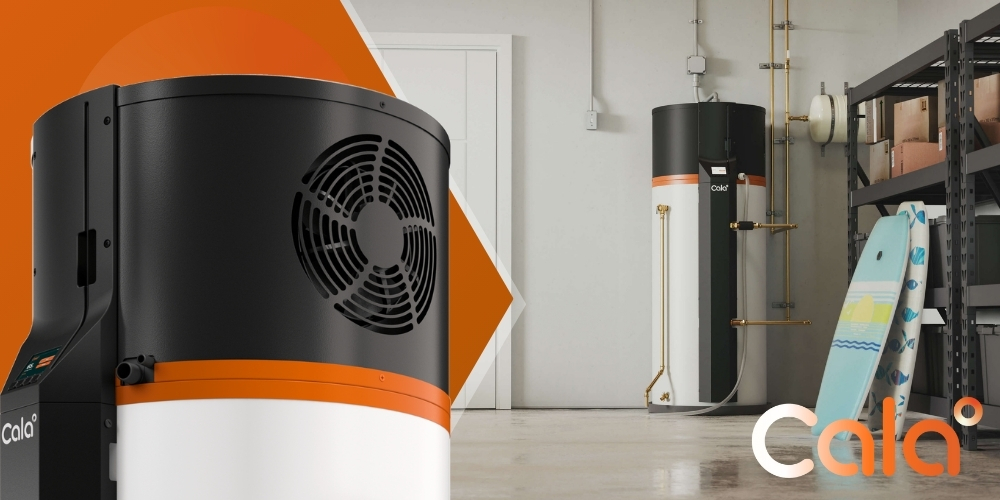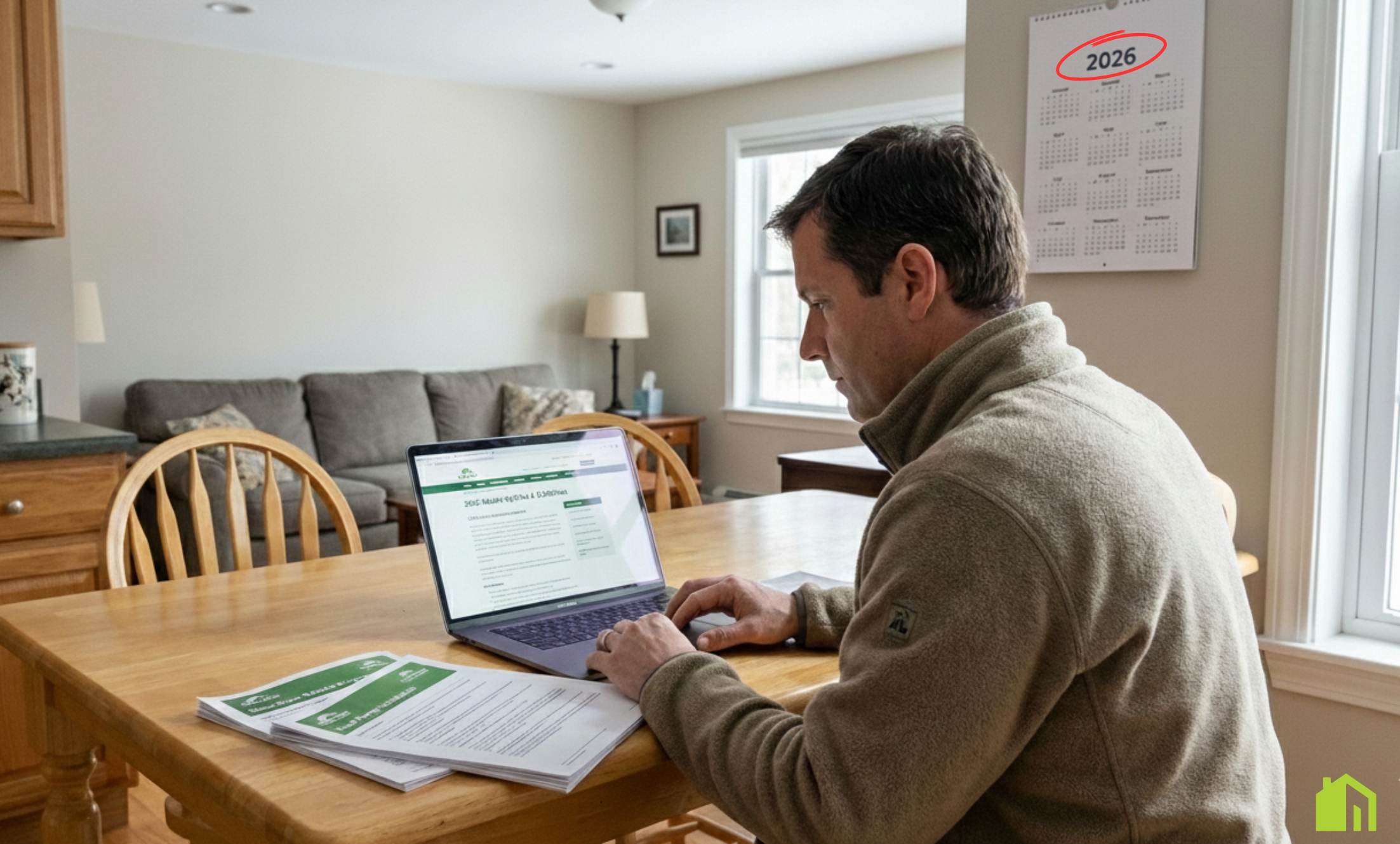Top Things Homeowners Forget When Installing a New AC Unit

Intelligent Heat Pump Water Heaters for Massachusetts Residential Homes — Why SumZero Selects Cala
By SumZero Energy Systems — Massachusetts’ #1 Heat Pump Installation Team
Picking a new water heater once involved a simple decision between gas and standard old electric, praying the hot water wouldn't be gone when there were two showers in a row. That's no longer the case. Now, the ideal solution for the majority of Massachusetts homes is a smart heat pump water heater (HPWH). This isn't the typical hybrid of which you might have heard, but a rather new breed of unit that adapts to your home's schedule, accommodates your energy usage, and maintains comfort consistently while consuming a lot less energy.
When homeowners want to have it exactly right the first time, our team is discerning about what products we choose. We consider the landscape and inspect the details before determining that they might work with Cala, a company that produces a high-technology hot water heater that modern homes need: intelligent, consistent, and efficient hot water — installed properly. This article describes why this alliance matters, how the tech benefits your home, what you should expect from our installation, and the handy information (rebates, credits, fit questions) homeowners inquire about daily.
Why This Alliance Is Important
(and What It Does for You)
There are two parts to a successful hot water solution:
Great technology
A system that makes you comfortable and uses less energy.
Great installation
Design, placement, airflow, electrical, condensate handling, commissioning, and long-term support.
Cala provides a tailor-built, smart HPWH platform. SumZero provides actual-world experience so that it works perfectly in real Massachusetts homes.
Together, we provide three things homeowners report wanting:
Accurate hot water at peak periods without guessing.
Cheaper monthly energy bills without compromise on comfort.
It is a future-proof solution that addresses the trend towards greener, all-electric homes.
Simply put: We get hot water. We know how to properly install heat pump technology. This combination makes a water heater upgrade a smart, long-term decision.
The Homeowner's Dilemma That We Are
If you have had a gas or a typical electric water heater, then you know the problems:
Hot-cold swings on hectic morning routines.
Higher electricity bills than hoped for.
No real insight, no real control.
A replace cycle that is experienced as "buying the same thing again."
Typical hybrid: Heat pump water heaters perform better, yet they still react: They delay until the tank cools off, then warm it up again. Homeowners averred they desire a system which thinks ahead—a unit which is a breeze to operate, handles peak load graciously, and does not make them compromise.
They fill that gap, which is why we work with them.

Why a Smart HPWH is Different
A standard electric water heater makes heat by passing an electric element, a giant toaster coil, through the tank. A heat pump water heater does it another way: it takes heat from the air it lives in and puts it into the water. Because it costs less energy to move heat than create it, heat pump water heaters run on much less power than typical electric ones. And they avoid burning gas, venting, and pollution.
A smart HPWH goes one step further:
It adapts to your home's schedule (morning showers, nighttime laundry) and preheats when demand isn't yet high.
You can use the app to check, plan, or increase hot water whenever you want.
It has a compressor that can change speed to fit what you need (not just "on/off").
It is achievable with a mixing valve holding water at the proper warmth for improved efficiency and then providing a sustained, safe warmth for usage. This is also possible with the availability of additional warm water at peak usage times.
It goes nicely with a contemporary home — primed for solar, time-of-use, and information you can view at a glance.
Result: more stable comfort, less energy use, improved control.
Why a Smart HPWH is Different
From what is visible on-site, there are three things certain for homeowners regarding the points of Cala:
1) Ease That Is Effortless
Consistent hot water at peak use is the ultimate test. Through forecasting demand and using a mixing valve, Cala maintains a steady supply. That results in less "uh oh" when two showers coincidentally happen at once or someone turns on the dishwasher.
2) Controls That You'll Ever Use
App functionality is key when done properly. You can check if there's hot water, turn up the heat for guests, view energy usage history, or simply set it and leave. As installers, we appreciate performance data — it allows us to address little issues before large ones form.
3) Future-Ready from Day One
Massachusetts is going towards clean, electricity-based homes. Cala's strategy combines well: it is scalable for solar power and accounts for time-of-use rates when needed. If you foresee solar energy at some time, or already have it, this water heater won't stop your home from being efficient.
4) A Company That Stands Behind Its Product
Cala backs every unit with a 10-year parts warranty and 3-year labor warranty — a strong sign they stand behind both the technology and the people who install it. At SumZero, we respect that kind of commitment because it mirrors our own approach: taking care of homeowners and supporting our partners with the same level of trust and accountability.
What SumZero Offers As Your Installer
(Why It Matters)
Even the best system won't work so great if installed wrong. Our task is getting your new HPWH working perfectly inside your home, not on a drawing board. This is what our approach is:
Right-size design.
We measure how much water your home needs and discuss the high-flow fixtures, filling bathtubs, and washer usage.
Best installation and ventilation.
HPWHs require air to make the heat move. We consider the room size, doors, vents, and — when necessary — ducting solutions for high performance and low noise.
Clean handling of electricity and condensate.
Safe power, tidy routing, and a trustworthy drainage plan are essential.
Commissioning correctly.
We don't just "turn it on." We verify performance, position the mixing valve, help you with the app, and verify your comfort objectives.
Rebates, credits, and financial assistance.
Mass Save, federal 25C, and the 0% HEAT Loan (if applicable) — we'll help you with that.
We take special care.
Our teams respect your home, protect your floors, and leave the place nicer than they found it.
Aftercare you can count on. Questions years down the road? We're here. The whole concept of a smart system is long-term confidence, not a one-day installation.
Costs, Incentives, and Lifetime Value
Two parts matter here: upfront cost and operating cost.
→ It is a better unit than a standard electric or simple hybrid. Tax credits and rebates make a big difference. A lot of Massachusetts homeowners rely on the 0% HEAT Loan for easier payments.
→ Month after month, the intelligent HPWH's effectiveness is where the value lies. By transferring (not creating) heat and by scheduling heating intelligently, homeowners consistently experience significant decreases in water-heating energy consumption — particularly relative to resistance electric, and many times relative to gas or delivered fuels when full costs are factors.
If you'd like figures specific to your home (household number, showering usage, energy costs), we'll do the math at your consult and provide you with a clear estimate of payback, lifetime cost saving, and the rebates for which you qualify.
Are Smarter Heat Pump Water Heaters Good for Your Home?
It is feasible for many Massachusetts homes. We will cover:
→ Household size and routines. Families with up to about 5 people usually do well with the standard setup; we will give advice for larger families or special situations.
→ Space and ventilation. We check the space, door vents, or ducts if necessary, and ventilation so the system operates properly.
→ Location. Basements are typical, as are utility rooms. As the unit functions, it removes air that feels like a dehumidifier — a typical plus for basements.
→ Electrical. We check panel capacity and proper wiring; no installation day surprises.
→ Future plans. Now or in the future for solar? Time-of-use rates? We'll put the system on so it grows with your home.
[[cta-heatpump]]
Why Is Cala Different from "Traditional Hybrids"?
✪ Control and Convenience:
Cala integrates intelligent tech with a mixing valve to remain comfortable, even when it is busy. Most standard hybrid units have simple modes and react only when the tank becomes chilled.
✪ Care and Trust:
Performance insights help you recognize problems early on and keep you on your feet for surprises. Traditional deployments are mostly "wait and see."
✪ Timing and Efficiency:
Variable driving and improved scheduling assist in energy saving with the maintenance of comfort. Ordinary hybrids operate more often and at undesirable times.
✪ Future-Ready
The design of the Cala accommodates with solar power, intelligent homes, and plans for utilizing electricity. Most older hybrids were not built for that usage.

What to Expect with SumZero
(From the First Call Through the First Shower)
✪ Talk & Pictures
We'll first glance at your objectives and take some fast photos of the current installation: the water heating unit, panel, and surrounding room.
✪ Right-Fit Design
We fit your hot water consumption and available spaces to a design which we endorse.
✪ Chaplain: A Comprehensive
Your quote is going to be transparent, includes information for installation, accessories, and a checklist for incentives. The paperwork assistance takes care of our end.
✪ Professional Installation
Licensed, insured, and detail-orientated. We dispose of the old unit, prepare the site, install and commission a new system, and leave the site tidy.
✪ App Introduction and Instructions
You'll discover how to see hot water supply, schedule increases, and view consumption — without being "technical."
✪ Support and Help
We're your long-term partner. Got a question? You call us — that's what homeowners deserve from the #1 heat pump installation company.
Common Questions We Get
(And Easy Answers)
Smart heat pump water heaters move heat from the surrounding air into the water instead of generating heat directly. This makes them up to three to four times more efficient than standard electric models. Cala’s intelligent system takes it further — it learns your household’s patterns, preheats before busy periods, and gives you app-based control to monitor or boost hot water anytime.
Most hybrid water heaters react when the tank cools. Cala predicts when your home will need hot water and heats proactively, saving more energy while maintaining comfort. It also features a variable-speed compressor, integrated mixing valve, and performance monitoring portal, giving both homeowners and installers a smarter, more reliable experience.
Savings depend on your energy source and usage, but many Massachusetts homeowners cut their water-heating costs by 50–70% when switching to a heat pump system. Cala’s intelligent controls add even greater efficiency. Add Mass Save® rebates, federal 25C tax credits, and potential 0% HEAT Loan financing, and most families see real payback within just a few years.
Yes — most Massachusetts homes are a great fit. Cala’s 65-gallon design comfortably serves households up to five people and can prepare up to 90 gallons ahead of peak use. The system needs adequate space and airflow, similar to a dehumidifier, and our team at SumZero handles every detail — from placement and ducting to electrical and performance checks.
SumZero Energy Systems is Massachusetts’ #1 heat pump installation team, trusted for precision, transparency, and high-quality service. We manage every step — design, installation, rebate paperwork, app setup, and long-term maintenance — so homeowners enjoy smarter comfort and lasting confidence. With SumZero, you’re not just buying equipment; you’re gaining a partner who stands behind it.
Why We Feel Secure Recommending This to Massachusetts Homeowners
We have a simple promise: we only install solutions that we would use in our own homes. Cala’s approach — being smart, having control, and being ready for the future — matches what we have learned from many talks with homeowners in the state. Together with SumZero’s careful installation standards and ongoing support, this water-heating upgrade makes sense right away and will last well with your home. Cleaner heat. Smarter comfort. Fewer bills.
Ready to Take the Next Step?

To learn more about Cala’s technology and vision, visit Cala Systems.
Top Things Homeowners Forget When Installing a New AC Unit
When planning a home AC install in Massachusetts, it’s easy to focus on the brand or perceived cooling power and overlook many critical aspects of installation that affect long-term performance. If you've chosen to install a new unit, you’ve already made a valuable investment in your home’s comfort. But skipping important considerations now can mean ongoing issues with efficiency, repairs, and utility bills later.
Let’s explore the most common things homeowners forget during AC installation—and how to fix them.
Ignoring Your Home’s Cooling Needs
Before you dive into the logistics of an AC installation service, make sure your system will suit your home—not work against it.
Treating all homes the same
Massachusetts homes range from older colonials to modern builds, and each type has different insulation, layouts, and cooling requirements. Installing a one-size-fits-all AC unit can leave areas too warm or inefficiently cooled.
- Older homes may have drafty spots that demand zoning or ductless solutions
- Open floor plans often need higher airflow or adjusted setbacks for temperature control
- Multi-story houses frequently benefit from separate temperature zones
Many Massachusetts homeowners assume bigger AC units are better, yet oversized systems often short-cycle and fail to dehumidify properly—leading to discomfort and higher energy bills.
Forgetting to calculate true cooling capacity
It’s important to go beyond square footage when choosing your unit. Proper load calculation—based on regional climate, sunlight exposure, ceiling height, and insulation—ensures your system matches your actual needs.
Commonly missed factors:
- Number and direction of windows
- Daily sun exposure
- Existing ductwork condition
- Attic insulation levels
Even in a moderate summer, Massachusetts humidity plays a major role in how your AC operates. Undersized or oversized units can lead to uneven cooling, excess wear, and higher costs.
Overlooking Ductwork and Airflow Design
Once you’ve selected your unit, don’t forget the path it takes to distribute air through your home.
Using old ductwork with a new unit
If your ducts are outdated, too narrow, or full of leaks, they can restrict airflow, no matter how great your AC system is.
- Leaky ducts waste cool air and reduce AC performance
- Poor design reduces airflow to rooms far from the unit
- Dirty or moldy ducts compromise indoor air quality
According to the Department of Energy, up to 30% of conditioned air can be lost through poorly sealed ductwork—causing both energy loss and reduced comfort.
As part of the ac installation, ask if duct inspections were done before size and design decisions were made. Replacing or sealing ducts can make a massive difference in how your home feels and how much you spend cooling it.
Forgetting to assess air return vents
Your air return system is as important as where the cold air goes out. Too few or poorly located return vents can make rooms feel stuffy—or cause your system to overwork.
Signs your airflow design needs a second look:
- Rooms stay warm despite running AC
- Dust accumulation increases
- Temperature varies widely between floors
Now's the time to invest in balanced airflow to avoid discomfort once installation is complete.
[[cta-heatpump]]
Skipping the Prep That Boosts Energy Efficiency
Many homeowners don’t realize the AC installation process is also a chance to increase long-term energy savings.
Rushing past home insulation and sealing
Even the best air conditioner will struggle if your home leaks cold air like an open window. Although it’s not part of the AC install itself, this is the perfect moment to upgrade insulation and weatherstripping.
Focus areas for Massachusetts homes:
- Attic insulation (most heat gain or loss happens here)
- Basement rim joists and sill plates
- Door and window caulking
Pairing energy efficiency upgrades with AC installation reduces your future cooling load and lets your system work smarter—not harder.
Skipping programmable thermostat integration
A new AC without a modern thermostat is like buying a new car with old tires. Smart thermostats don’t just allow pre-programmed schedules, they reduce wasted energy while keeping your home more comfortable.
Look for features like:
- Remote temperature control via phone
- Learning algorithms to adjust cooling habits
- Travel or vacation modes
This small step can lead to meaningful savings—and helps your system last longer by avoiding overuse.
Homes with smart thermostats and sealed air leaks saved an average of 13–23% on energy costs annually, according to data from Mass Save®.
Not Planning for Future Maintenance & Upgrades
Massachusetts weather can be tough on AC units. Preparing your system for long-term durability starts the day you install it.
Neglecting clearance and airflow around outdoor units
Whether you’re getting a central ac installation or split ac installation, your outdoor condenser needs free space to release heat and function properly. Yet many homeowners unknowingly crowd this area with shrubs, fences, or patio furniture.
Leave at least:
- 24 inches of clear space on all sides
- 60 inches vertical clearance above the unit
- Regular access for cleaning and servicing
Blocked units run hotter, wear faster, and consume more electricity.
Not planning future tech upgrades
If your new system doesn’t support future features—like zoning, energy monitoring apps, or solar grid tie-ins—you might miss out on valuable enhancements down the line.
Plan ahead:
- Ask if your control board supports modulating or variable systems
- Check compatibility with Wi-Fi enablement or home energy dashboards
- Consider ductless mini-split options if you plan to finish a basement or addition later
As climate needs shift in Massachusetts, being future-ready ensures your system won’t need replacing too soon.
Don’t Miss Out on Local Rebates and Incentives
Too often, homeowners forget to tap into available programs that offer rebates for efficient cooling systems. Through Mass Save®, many Massachusetts households qualify for significant rebates and 0% interest financing for eligible upgrades.
How to get started:
- Schedule a no-cost home energy assessment
- Ask about qualifying systems like Mitsubishi Electric or Bosch HVAC options
- Review insulation or duct upgrades that may qualify
Don’t leave money on the table by skipping this step. Visit Mass Save® to explore current offers and maximize your investment.
Avoiding these simple oversights can make your home ac install far more valuable and efficient for years to come. Your comfort, utility bills, and the lifespan of your system all benefit when you plan beyond just the unit and think about long-term performance.
Ready for reliable comfort and long-term savings? Our professional AC installation ensures your system fits your home, boosts energy efficiency, and avoids costly mistakes from the start.
Schedule AC InstallationYou Might Also Like…
Continue learning with handpicked articles that inform and inspire.
Not Sure Where to Start? We’ll Guide You
Let our experts design the right heating and cooling solution—customized for your comfort, your layout, and your energy goals. No pressure. Just clarity.
Request FREE ESTIMATE









